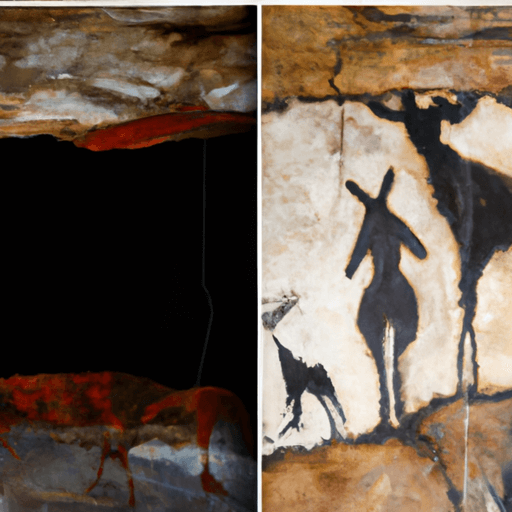From Caves to Canvas: The Influence of Prehistoric Art on Modern Art Styles
Exploring the labyrinthine realms of art history, a fundamental connection surfaces between ancient art forms and contemporary art movements. One crucial bridge that connects the epochs of art history is the influence of primitive cave paintings on modern art. The raw aesthetics of prehistoric art have shaped modern artistic styles, techniques, and artists, proving that the flame of inspiration transcends through millennia.
The Primitive Art Forms: An Intrinsic Expression
Cave paintings, predominant during the Paleolithic era, are the earliest known form of human art. In caves hidden across the globe, early humans left a vibrant tapestry of their beliefs, perceptions, and life. Pictures of celestial bodies, geometric symbols, and detailed depictions of megafauna run riot on the walls of caves, rich with ochre-based pigments. The beauty of this art form lies in its raw and fundamental expression, stripped of intricate refinement.
Ancient Influences on Modern Movements
The primal influences of cave paintings are evident in various modern art movements. The profound impact can be observed notably in the Expressionist and Surrealist movements. Expressionism, with its emphasis on raw, emotional, and subjective experiences resonates with the fundamental instincts depicted in cave paintings. Artists like Wassily Kandinsky and Egon Schiele, bridged the past and present through their art, echoing the primal, emotional directness of prehistoric art.
Surrealism, another movement significantly influenced by primitive art, relied heavily on dreams and the subconscious for inspiration, a concept prevalent in interpretations of cave paintings. Salvador Dali's works, with their bizarre and fantastical imagery, resonate with the mystic imagery seen in ancient cave art.
Relevance of Cave Paintings in Contemporary Art
The primal charm of cave paintings continues to beguile modern artists due to a variety of reasons. The primitiveness, fragility, and rawness seen in cave paintings appear as a stark contrast to the increasingly digital, polished, and mechanized world of contemporary art. The primal aesthetics affect artists on an emotional and conceptual level, leading to profound inspiration.
Views from Renowned Art Historians
Renowned art historian, E.H. Gombrich famously stated, “There really is no such thing as Art. There are only artists.” Similarly, in connection with our theme, we find that no art form is isolated. Each form, as distinct as it may seem, bridges gaps and connects with its forebearers. Art critic John Berger, in his seminal book 'Ways of Seeing' said, “The relation between what we see and what we know is never settled.'' This epitomizes the ongoing exploration of the link between cave paintings and modern art styles.
Conclusion
While the contemporary art world and ancient cave paintings seemingly represent opposite ends of the art history spectrum, the influence of the latter on modern styles is undeniable. In exploring this mutual exchange of ideas and influences, we gain a deeper understanding of art as a timeless human endeavor and its expression encapsulating cosmic linkages throughout history.


















Comments
Leave a Comment